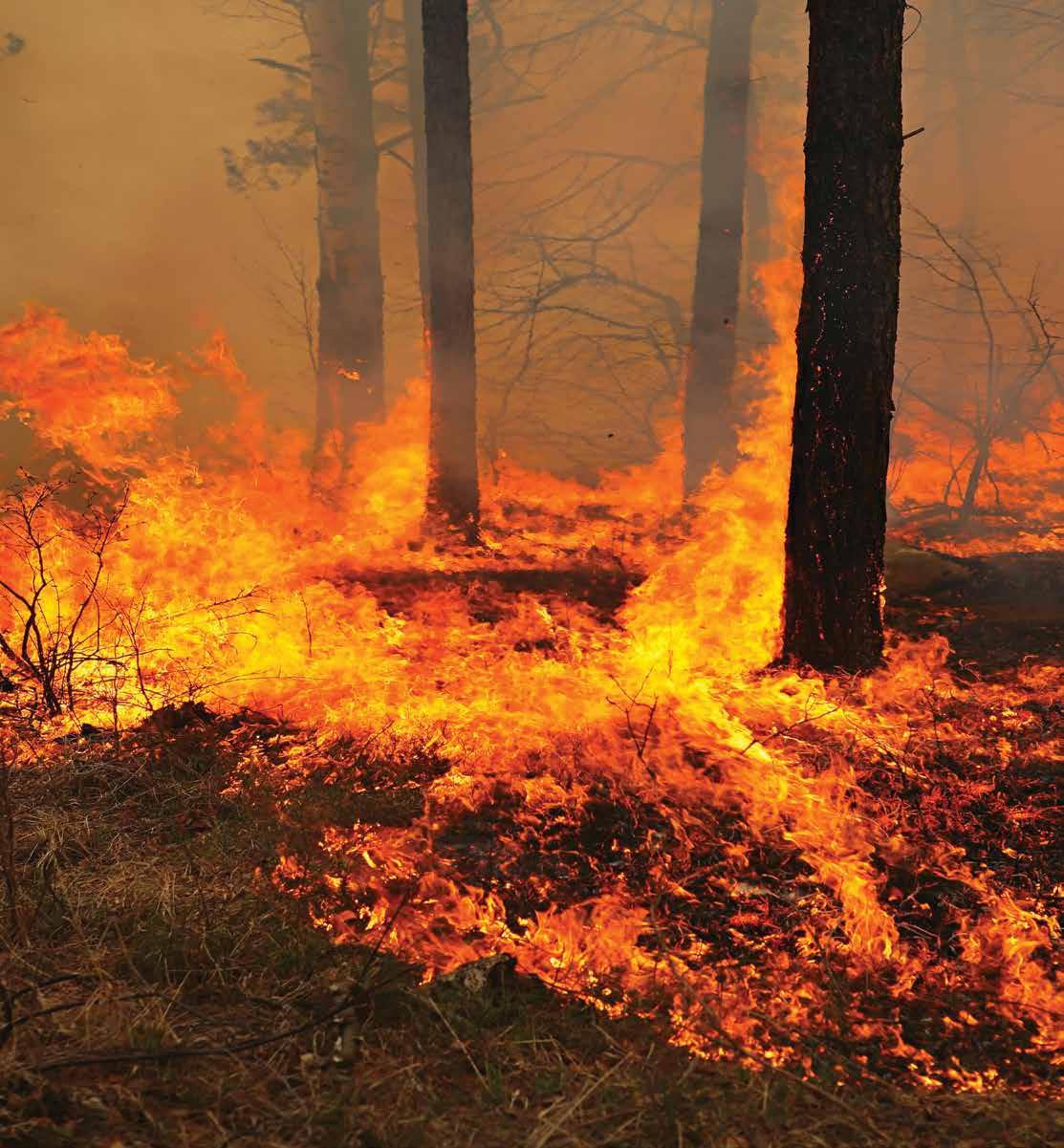
6 minute read
Idler's Complex
BY Keith Crossler
Do you ever get that feeling that you need to just drop what you’re doing and go? Not like I’m watching TV and I really need to go do the dishes type of feeling... but an unexplainable urge that you need to be somewhere else. Helping somewhere else or that even though you aren’t really available, but you just go. It was late August. All of the Palouse area was in a Red Flag Warning. Which means hot, dry, low humidity, and high winds. Potential for rapid fire growth is extreme. It’s very common that time of year. Fire departments all over the area know about the warnings and are prepared to go quickly and with extra resources. The faster you can stop an event the better. Mutual aid requests are made early into an event as it always takes time to get those extra resources on scene. This particular day, I was at work holding down the office by myself. So, I knew if there was a call that day, I wouldn’t be able to go. At least not until after the normal work hours. It was about 3 in the afternoon and we were dispatched to a reported barn fire out by Idler’s Rest. I waited and listened as the call unfolded. We had a quick response. A fully staffed structure truck headed out in hopes of knocking down the flames fast. Keeping it from spreading to anything else. Water tenders were close behind them with a brush truck out the door in case it spread to the grass. This is when you realize how dry it was that day. Before we even got the call, it was spreading to the grass. Moving quickly. Very quickly. Later, the guys would talk about the fire spotting out 20-30 feet from the fire lines. There was no stopping it out in the open fields. Mutual aid requests were given. Idaho Department of Lands was coming from their Deary office. They jumped on the radio and said they had already requested air support. As I sat and listened, I couldn’t help but feel like I needed to go help. But I couldn’t. I knew I would go after work, but man it was tough to just sit and listen. As the fire progressed, you could tell these guys were trying their absolute best to get a handle on things. It was an uphill battle at best. As the fire moved over a ridge and into the next draw, it was overwhelmingly obvious that things were getting worse and folks were getting confused. It was about 45 minutes into the event and I heard one of the water tenders say something we never want to here. “I’m up at the house and my escape route just burned over!” My heart sank. For the first time in my 22 years, I thought we had a real possibility of losing one of our own. I stood up, locked the office, and left. I had to go. There was no way I couldn’t be there to help.
Advertisement
I raced to the station. I knew a bunch of our trucks were already out there, but I would take whatever was left and go help. To my surprise, there was still a brush truck there and waiting. I was by myself so I radioed into Command and asked if they would like me to respond. “Absolutely!”. Just as I was about to head out, another member pulled up. He jumped in and we were off.
Idler’s Complex

It was so surreal to look out and see that huge column of smoke as we got closer. We rolled into the staging area, picked up another member, and were assigned to evacuation confirmation on West Twin Road. We had two driveways to check. As we went to the first one, I noticed another “driveway”, but it had a cable across it with a no trespassing sign. No way someone lived up there, but dang it, we had to check. We dropped the cable and headed up. It was tight and overgrown. We could hear the fire in the distance burning in the trees. Another feeling that we had to go just a little further before we abandoned this road. Sure enough, there was a house. I couldn’t believe it. Banging on the doors we found an elderly woman inside the home. She didn’t want to leave, but we had to make her go. If this fire kept going at the pace it was, we had minutes at best to get out of there. She finally agreed and came out to her car. We wiggled our truck around and drove out. One down, still two to go. We hurried up the road and checked the other two homes. Empty. We were clear. Checking back in with our Division Chief, we were assigned to drive out the rest of the main road and see if we could find how far the fire progressed. It wasn’t too far. A half mile or so. Surprisingly enough, we found it. Up in the trees, the wind wasn’t so overwhelming. It was actually pretty mild. We dumped our load of water where the fire was impinging the road. If we could keep it south of this road and between the field that the farmers had put a solid fire break in, we could probably hold the fire where it was. Since we were empty, we headed back to our division staging area to fill up. I chatted with the Division Chief and asked for more resources to anchor the line and stop the fire. We didn’t get it. We kept being held back so the air support could work the fire. It was frustrating to just sit and wait. Finally, we got the green light to go back up to the fire line. With a couple of other trucks, we were to make a push on the south side of the road and try to knock out as much as we could. The air support was going to lay a retardant line on the north side of the road in case it tried to jump over. I really felt like we had it at this point, until we were pulled out again. The Incident Commanders felt it was better for us to stay out of the way and let the planes and helicopters work while we still had the day light. I however, disagreed. We could do so much more on the ground in between their efforts. But we followed orders. We stayed in our staging area waiting for another assignment. The fire really died down as evening fell. Cooler air along with rising humidity slowed any fire progression on the ground and at this point, we had it out of the top of the trees. Dozers and the farmers had a quick line around almost the entire fire. One last assignment for us was to run up through a field and see if we could offer any other support on a hotspot before it got completely dark. There really wasn’t anything for us to do but watch the helicopters make their final drops (and boy was it cool to watch standing just feet away and pretty much directly below them). Fortunately, our water tender that was trapped earlier that day, made it out okay. The house they were protecting had a good green zone around it and they were able to sit tight as the fire burned around them so they could then make it out to the staging/ safety zone. I would say we had some close calls that day. The fire really blew up fast. The support from our mutual aid partners was really impressive, to say the least. When we drove out that night to go back to the station, we were seeing folks from hundreds of miles away there to help. Most everyone was sent back home that night. The Department of Lands took over the incident and handled the full containment and extinguishment over the course of the next week.












